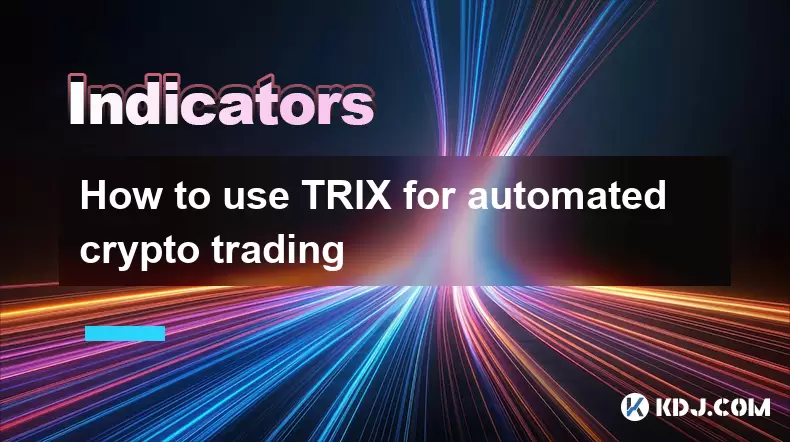-
 Bitcoin
Bitcoin $118,164.3721
-0.58% -
 Ethereum
Ethereum $3,439.2144
9.04% -
 XRP
XRP $3.2533
10.40% -
 Tether USDt
Tether USDt $1.0003
0.01% -
 BNB
BNB $719.2057
3.65% -
 Solana
Solana $176.1008
5.82% -
 USDC
USDC $0.9998
-0.01% -
 Dogecoin
Dogecoin $0.2141
6.52% -
 TRON
TRON $0.3122
3.73% -
 Cardano
Cardano $0.8144
9.21% -
 Hyperliquid
Hyperliquid $46.3175
-3.33% -
 Stellar
Stellar $0.4692
1.81% -
 Sui
Sui $4.0252
0.40% -
 Chainlink
Chainlink $17.0647
3.84% -
 Hedera
Hedera $0.2493
4.67% -
 Bitcoin Cash
Bitcoin Cash $495.9806
-0.87% -
 Avalanche
Avalanche $22.8661
3.91% -
 Shiba Inu
Shiba Inu $0.0...01442
4.59% -
 UNUS SED LEO
UNUS SED LEO $8.8195
0.03% -
 Toncoin
Toncoin $3.2344
4.19% -
 Litecoin
Litecoin $99.5361
2.51% -
 Polkadot
Polkadot $4.2226
2.56% -
 Monero
Monero $337.5953
1.12% -
 Pepe
Pepe $0.0...01358
4.99% -
 Uniswap
Uniswap $8.9955
-1.05% -
 Bitget Token
Bitget Token $4.7519
1.38% -
 Dai
Dai $0.9998
-0.03% -
 Ethena USDe
Ethena USDe $1.0002
-0.05% -
 Aave
Aave $322.0449
-2.20% -
 Bittensor
Bittensor $427.6037
-2.47%
How to use TRIX for automated crypto trading
The Triple Exponential Average (TRIX) helps crypto traders spot trend reversals by filtering noise and generating early momentum signals, especially useful in volatile markets.
Jul 17, 2025 at 09:08 am

Understanding TRIX and Its Relevance in Crypto Trading
TRIX, short for Triple Exponential Average, is a momentum oscillator primarily used to identify oversold and overbought conditions in financial markets. In the context of crypto trading, TRIX helps traders filter out market noise and detect potential trend reversals or continuations. Unlike traditional moving averages, TRIX applies triple exponential smoothing to price data, which makes it more responsive to changes in trend while minimizing false signals.
In automated crypto trading systems, integrating TRIX can enhance decision-making by providing algorithmic triggers based on calculated values. These triggers can be programmed into bots that execute trades automatically when certain TRIX thresholds are met. The key advantage lies in its ability to offer early signals for trend changes, especially useful in volatile cryptocurrency markets.
Setting Up Your Automated Trading Environment
Before implementing TRIX into your trading bot, ensure your environment supports real-time data feeds and API integrations with major exchanges like Binance, Coinbase, or Kraken. You'll need:
- A programming language such as Python or JavaScript
- Libraries like
pandasandnumpyfor data manipulation - Access to exchange APIs via tools like ccxt
- A backtesting framework to validate your strategy
Once you've selected your development stack, install necessary packages and set up your credentials securely. It's crucial to test all components independently before integrating them into a full-fledged system.
Implementing TRIX Calculation in Code
To use TRIX effectively, first calculate it programmatically using historical price data. Here's how you can do it step-by-step:
- Fetch historical closing prices from an exchange API
- Apply Exponential Moving Average (EMA) three times consecutively with a specified period (usually 14)
- Calculate the percentage difference between today’s and yesterday’s triple EMA value
For example, in Python:
import pandas as pddef calculate_trix(data, period=14):
ema1 = data['close'].ewm(span=period, adjust=False).mean()
ema2 = ema1.ewm(span=period, adjust=False).mean()
ema3 = ema2.ewm(span=period, adjust=False).mean()
trix = ema3.pct_change() * 100
return trix
Ensure that this function is integrated within your data pipeline so that it receives updated pricing information regularly. This allows your bot to generate fresh TRIX readings every time new candlestick data becomes available.
Creating Trade Signals Based on TRIX Values
After computing TRIX values, define rules for generating buy/sell signals. Common approaches include:
- When TRIX crosses above zero, consider it a buy signal
- When TRIX crosses below zero, interpret it as a sell signal
- Look for divergence between price action and TRIX line to spot potential reversals
These logic blocks must be translated into code that interacts with your order execution module. For instance:
if trix.iloc[-2] < 0 and trix.iloc[-1] > 0:
place_buy_order()
elif trix.iloc[-2] > 0 and trix.iloc[-1] < 0:
place_sell_order()
Remember to incorporate risk management features such as stop-losses and position sizing algorithms alongside these signals to prevent excessive losses during unexpected market movements.
Integrating TRIX Strategy Into a Live Bot
With both calculation and signaling mechanisms ready, deploy your strategy onto a live trading bot. Steps involved here include:
- Connecting to exchange APIs using secure authentication tokens
- Implementing websockets for receiving real-time market updates
- Logging all executed trades and performance metrics for analysis
- Ensuring robust error handling to manage network issues or API rate limits
Use platforms like Frequencies, Hummingbot, or custom-built solutions depending on your requirements. Monitor the bot closely during initial operations to verify that TRIX-based decisions align with expected outcomes under various market conditions.
Frequently Asked Questions
Q: Can I combine TRIX with other indicators for better accuracy?
Yes, many traders pair TRIX with complementary indicators like RSI or MACD to confirm trade signals and reduce false positives. Combining multiple strategies often improves overall performance.
Q: Is TRIX suitable for all types of cryptocurrencies?
While TRIX works well across most assets, highly illiquid altcoins might produce unreliable signals due to erratic price behavior. Stick to major coins like Bitcoin or Ethereum unless thorough testing validates effectiveness on smaller-cap tokens.
Q: How frequently should I update my TRIX parameters?
Parameter tuning depends on market dynamics; however, avoid frequent adjustments without substantial evidence supporting changes. Backtest thoroughly before altering settings mid-strategy.
Q: What are common pitfalls when automating TRIX-based strategies?
Overfitting models to past data, neglecting transaction costs, and ignoring slippage effects are typical mistakes. Always simulate realistic trading scenarios before going live.
Disclaimer:info@kdj.com
The information provided is not trading advice. kdj.com does not assume any responsibility for any investments made based on the information provided in this article. Cryptocurrencies are highly volatile and it is highly recommended that you invest with caution after thorough research!
If you believe that the content used on this website infringes your copyright, please contact us immediately (info@kdj.com) and we will delete it promptly.
- Trump, Meme Coins, and Tokens: A Wild Ride in Crypto
- 2025-07-17 18:50:12
- Ripple's EU Expansion: RLUSD Takes Center Stage, XRP's Role Defined
- 2025-07-17 18:30:12
- XRP Whale Alert: $73M Moved to Coinbase – Correction Incoming?
- 2025-07-17 19:10:14
- Sui (SUI), Mutuum Finance (MUTM), and DeFi Adoption: A Tale of Two Trajectories
- 2025-07-17 19:10:14
- Crypto Bills, ETH Surge, and Buybacks: Decoding the Latest Moves
- 2025-07-17 19:50:11
- Shiba Inu's ATH Ambitions: Can It Outpace the Competitors?
- 2025-07-17 18:30:12
Related knowledge

Advanced RSI strategies for crypto
Jul 13,2025 at 11:01am
Understanding the Basics of RSI in Cryptocurrency TradingThe Relative Strength Index (RSI) is a momentum oscillator used to measure the speed and chan...

Crypto RSI for day trading
Jul 12,2025 at 11:14am
Understanding RSI in the Context of Cryptocurrency TradingThe Relative Strength Index (RSI) is a momentum oscillator used to measure the speed and cha...

Crypto RSI for scalping
Jul 12,2025 at 11:00pm
Understanding RSI in the Context of Crypto TradingThe Relative Strength Index (RSI) is a momentum oscillator widely used by traders to measure the spe...

What does an RSI of 30 mean in crypto
Jul 15,2025 at 07:07pm
Understanding RSI in Cryptocurrency TradingRelative Strength Index (RSI) is a momentum oscillator widely used in cryptocurrency trading to measure the...

What does an RSI of 70 mean in crypto
Jul 13,2025 at 06:07pm
Understanding the RSI Indicator in Cryptocurrency TradingThe Relative Strength Index (RSI) is a widely used technical analysis tool that helps traders...

Does RSI work in a bear market for crypto
Jul 16,2025 at 01:36pm
Understanding RSI in Cryptocurrency TradingThe Relative Strength Index (RSI) is a momentum oscillator used by traders to measure the speed and change ...

Advanced RSI strategies for crypto
Jul 13,2025 at 11:01am
Understanding the Basics of RSI in Cryptocurrency TradingThe Relative Strength Index (RSI) is a momentum oscillator used to measure the speed and chan...

Crypto RSI for day trading
Jul 12,2025 at 11:14am
Understanding RSI in the Context of Cryptocurrency TradingThe Relative Strength Index (RSI) is a momentum oscillator used to measure the speed and cha...

Crypto RSI for scalping
Jul 12,2025 at 11:00pm
Understanding RSI in the Context of Crypto TradingThe Relative Strength Index (RSI) is a momentum oscillator widely used by traders to measure the spe...

What does an RSI of 30 mean in crypto
Jul 15,2025 at 07:07pm
Understanding RSI in Cryptocurrency TradingRelative Strength Index (RSI) is a momentum oscillator widely used in cryptocurrency trading to measure the...

What does an RSI of 70 mean in crypto
Jul 13,2025 at 06:07pm
Understanding the RSI Indicator in Cryptocurrency TradingThe Relative Strength Index (RSI) is a widely used technical analysis tool that helps traders...

Does RSI work in a bear market for crypto
Jul 16,2025 at 01:36pm
Understanding RSI in Cryptocurrency TradingThe Relative Strength Index (RSI) is a momentum oscillator used by traders to measure the speed and change ...
See all articles

























































































